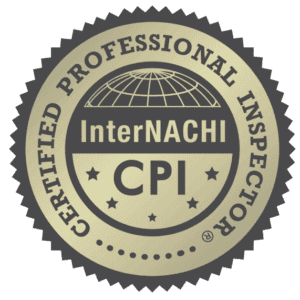How to Protect Your Back When Doing Work on Your Home
By Ross Morgan
Back pain affects about 80% of people in their lives (1), and the unlucky 8% will live with chronic back pain (2). A friend of mine recently moved an outside 2-wheeled Grill from the backyard to his garage. He said that it felt light, but he has suffered from Thoracic vertebrae (middle back) pain for several weeks following the incident and had to seek treatment.
This doesn’t have to be your fate. There are a few steps you can take to reduce your chances of back pain and improve your quality of life. In this article, I will outline these steps and use a couple of real-world examples to bring them to life.
Four Steps for safely performing work around the home
1) Exercise routinely with a focus on core resistance exercises to keep your muscles strong and flexible. Some examples of core exercises I recommend are Planks, Side Planks, Bird Dogs, and Dead bugs.
2) Evaluate each situation carefully before starting work.
· Is there a clear path?
· Determine the weight, size, shape, and position of the object.
· Can you do it alone or need mechanical aid?
· Choose your route. Do you need to clear a path?
· Warm up before your body before lifting.
3) “Brace“ your body properly. This includes lowering your shoulder blades and tightening your lower back. This is achieved through redistribution and redirection. Here is a great link to visualize this technique. https://breakingmuscle.com/fitness/how-to-brace-and-breathe-properly-for-weightlifting”(3)
4) Lift like an Olympic Weightlifter. Olympic Weightlifters cannot afford to get hurt and neither can you. They are not only strong, but also flexible, fast, and they use nearly perfect lifting technique to maximize their lifts without getting hurt. https://myhealth.alberta.ca/Health/pages/conditions.aspx?hwid=hw206944 (4)
Let’s complete an example project: Fixing a leak under a sink
Evaluate the situation, following the 4-step method above.
1) Exercise
Warm-up by pulling in your belly button to stabilize your spine, lowering your shoulder blades, and breathe through your chest. Holding this position while working protects the spine. Roll your shoulders to relax your neck and then ensure your core feels tight. Slowly stretch your hamstrings before bending down.
2) Evaluate
Keep your core engaged whenever you are working, only relaxing it when you’re not physically working.
- In many cases, there are lots of cleaners, sponges, towels, and other items in the way, which should be completely moved from the area.
- Determine the proper tools for the job to prevent difficult contortions that can strain your back. Place the tools where you can easily access them to minimize getting up and down.
- Generally, the floor of the cabinet under the sink is 3-5 inches off the floor, so put a pad, or other cushioned support on the floor so that your back is flat when you need to lie down under the cabinet to work on the piping and water valves. It will also protect the knees when kneeling.
3) Brace
“Brace“ your body properly.
4) Lift
Lift like an Olympic Lifter (This includes moving small items like under the sink in the above photo.
Following these 4 steps can lead to years of household chores with minimal pain and maximum results. See my Blog on (“Brace” To Prevent Home Injuries) at https://insideoutchicago.com/new-blog.
(1) Rubin Dl. Epidemiology and Risk Factors for Spine Pain. Neurol Clin. 2007; May;25(2):353-71.
(2) B. Druss, Marcus, S., Olfson, M., and Pincus, H.A. (2002). “The Most Expensive Medical Conditions in America.” Health Affairs, 21(4): 105-111. https://hpi.georgetown.edu/backpain/
(3) Wil Fleming Coach, Bloomington, Indiana, United States, Olympic Weightlifting
(4) Medical Review: William H. Blahd, Jr., MD, FACEP – Emergency Medicine & Brian O’Brien, MD, FRCPC – Internal Medicine & Adam Husney, MD – Family Medicine & Kathleen Romito, MD – Family Medicine & Joan Rigg, PT, OCS – Physical Therapy





